Honor Magic 2 Review
Honor Magic 2 Review
A good phone with a bad design
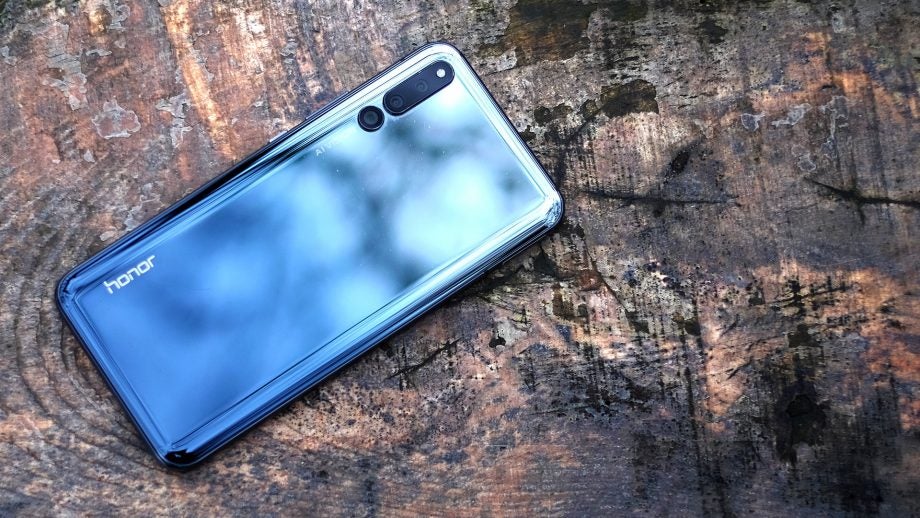
Verdict
A clever alternative to a phone with a notch, but not the best option at the price.
Pros
- Solid battery life
- Bold notch-free screen
- Powerful
Cons
- Finicky fingerprint scanner
- No headphone jack
- Packed full of unwanted software
Key Specifications
- Review Price: £575
- 6.39-inch OLED display
- 3500mAh battery
- Sliding mechanism
- Three rear and three front cameras
- 40W fast charging
What is the Honor Magic 2?
The Honor Magic 2 is a phone design experiment that sounds strange on paper, but in reality makes some sense. It has a slide-up selfie camera, rather than a notch or punch-hole display.
Phones such as this and the Xiaomi Mi Mix 3 demonstrate that unusual designs can be surprisingly practical when executed with some thought.
Related: Honor 20 Pro review
However, the Magic 2 is tough to fully recommend right now. Honor’s own View 20 is a stronger device in most respects. The Magic 2’s in-screen fingerprint scanner’s reliability is well below average and Xiaomi’s interpretation of the same concept is slicker.
Editors Note: Due to the recent retraction of Huawei’s Android license, future Huawei and Honor phones won’t be able to access Google Play Services and as a result many Android apps including YouTube and Gmail. Both Huawei and Google have confirmed Huawei and Honor phones, like the one in this review, will continue to have access for this time being. Until we know more about the situation we’re leaving the scores on all our Huawei reviews, however as the situation changes we’ll revisit this.
Related: Samsung Galaxy S10
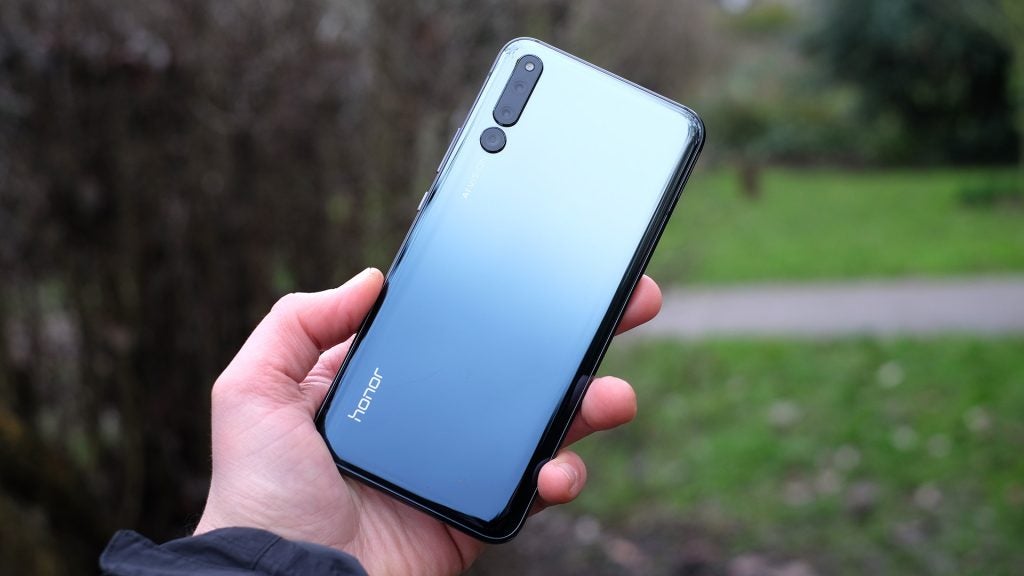
Honor Magic 2 – Design
The Honor Magic 2 has one truly notable feature. Drag down on the screen with your thumb and its front slides downwards. This reveals a glass lip up top, which is home to the phones front cameras.
The location of these front cameras is the reason we’ve been drawn into debate over whether notches are great or terrible over the past couple of years. A slider mechanism is likely to be the less popular of the two new notch-killing solutions of 2019; the other being the punch-hole display.
Similar to the Xiaomi Mi Mix 3, that the Honor Magic 2 seems entirely normal right up until you slide its screen is the main victory. The handset is thicker than average at 8.3mm, and about 10% heavier than the category norm too.
Initially, however, you’re more likely to notice the Magic 2’s eye-catching finish than the seam-heavy sides, which suggests there’s something more unusual going on here.
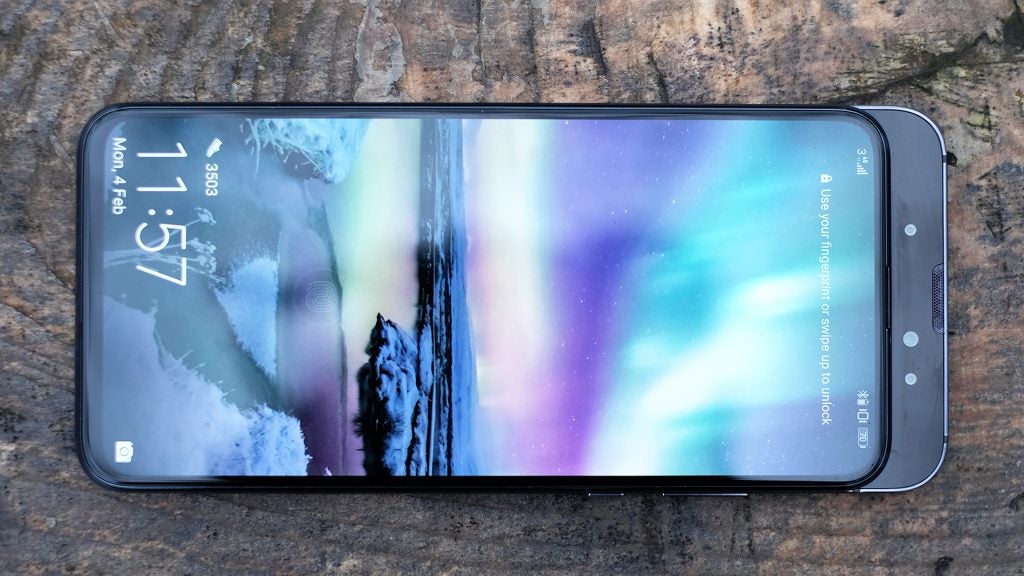
The finish on the rear of the handset is a gradient that shifts from blue at the bottom to chrome at the top. It’s an icy-cold look cast in glass on the rear and aluminium on the sides. Honor says the phone uses Gorilla Glass 5, but I’d recommend using both a screen protector and a rear case nonetheless. Already my device has suffered a couple of minor scratches on both sides, and the chunky raised camera housing invites dust and grime. The reflective chrome-like finish only highlights it.
Elsewhere, the Honor Magic 2 is a pretty forward-looking phone. There’s no headphone jack, which remains annoying, but the fingerprint scanner lives in the display rather than on the back.
Related: Sony Xperia XZ4
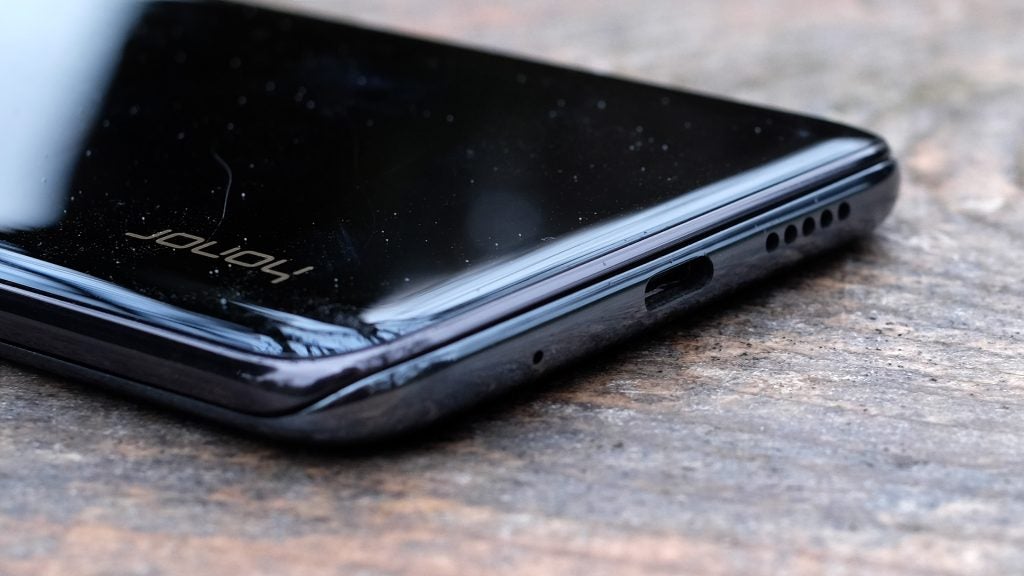
This would be a major advantage over the View 20 – since it’s “newer” tech – if it worked perfectly. But it doesn’t. After re-registering my thumbprint several times, the handset continues to regularly fail to recognise it. This is more likely to be a software issue, given the actual sensor is probably the same – or similar to – those of other in-screen scanner phones. It remains annoying nevertheless.
Honor misses an opportunity with the slider mechanism. In the Xiaomi Mi Mix 3, you can use it to open up a tool bar, or launch a specified app. In the Magic 2 it’s simply used to launch the camera or the HiVoice digital assistant.
In terms of execution, Honor’s slider is less polished than Xiaomi’s in other areas too. Occasionally you end up in the camera app with a blank screen because the Magic 2 has managed to switch to the selfie camera while the slider is closed.
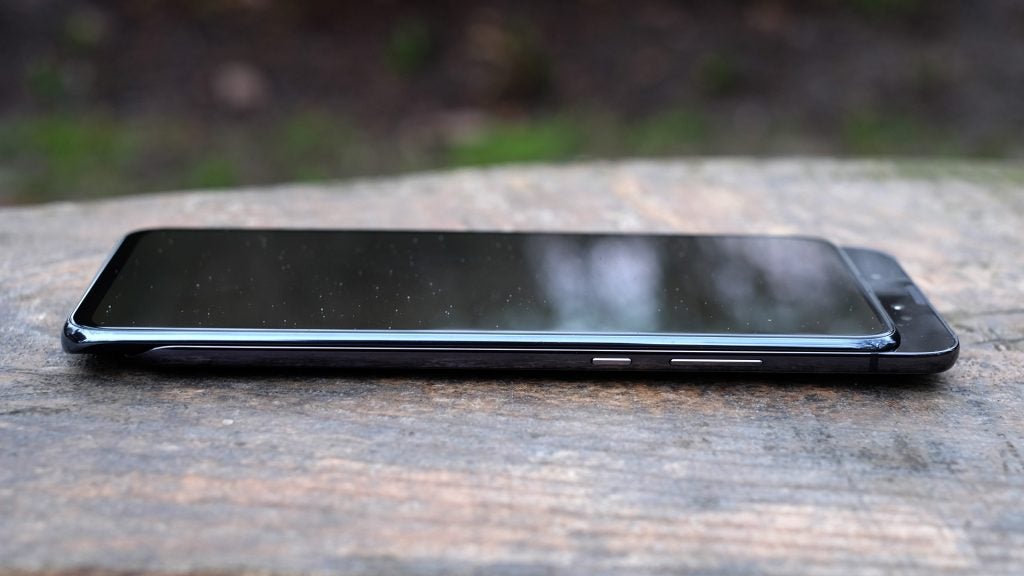
Honor Magic 2 – Screen
The Honor Magic 2 has a 6.39-inch AMOLED screen of 2340 x 1080 pixels. While it may initially seem like you’d buy this phone for the slider, it’s the screen that’s the real draw.
As well being as punchy and contrast-rich, the display fills the entire front of the device. Along with the Xiaomi Mi Mix 3, you won’t find a better phone for watching YouTube or Netflix on the way to work. That said, to really get the best out of the Magic 2’s panel you need to watch cinematic aspect footage, not the common 16:9.
For an average 16:9 video to fill the panel, the top and bottom will need to be cropped; this screen has an ultra-long (or wide) 19.5:9 aspect.
Related: Huawei P30 Pro
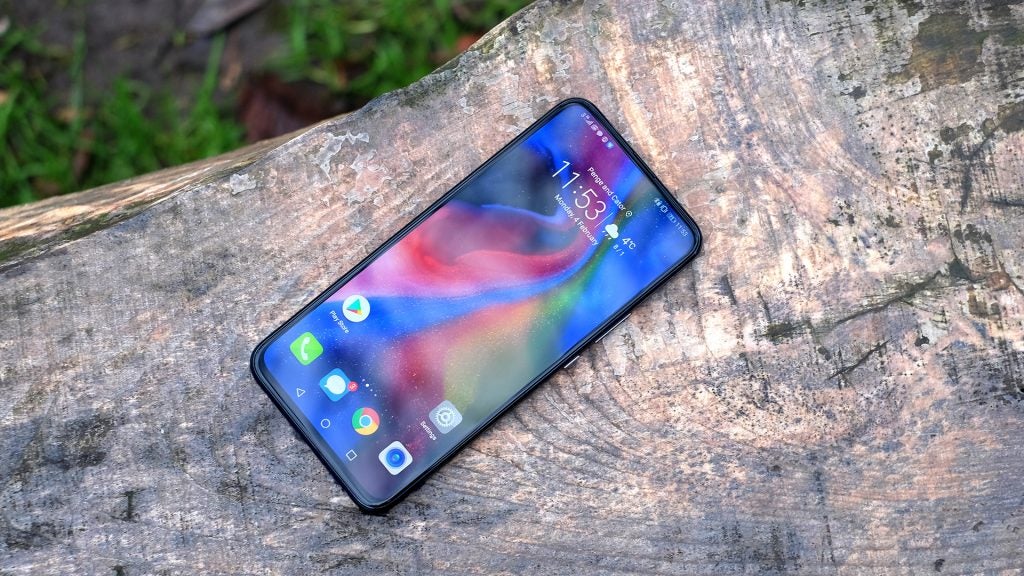
That said, there’s no video-playing downside compared to a phone with a notch or punch hole. You can still watch footage at standard 16:9, leaving black bars at the sides. There’s no need to chop PewDiePie’s head off, even though some of you may want to.
The Honor Magic 2’s colour management is great, too. You have a choice of Normal or Vivid modes. Most folk will prefer Vivid, which offers deep saturation and super- rich colours Normal looks more subdued, but actually makes it far easier to see the differences between tonal gradations in, say, nature scenes.
Max brightness is powerful enough to cope with bright days and angled viewing has very little of the white colour shifting you’ll see in some older OLED panels, particularly those LG makes. Samsung makes the Magic 2’s panel, so excellent screen performance is no surprise.
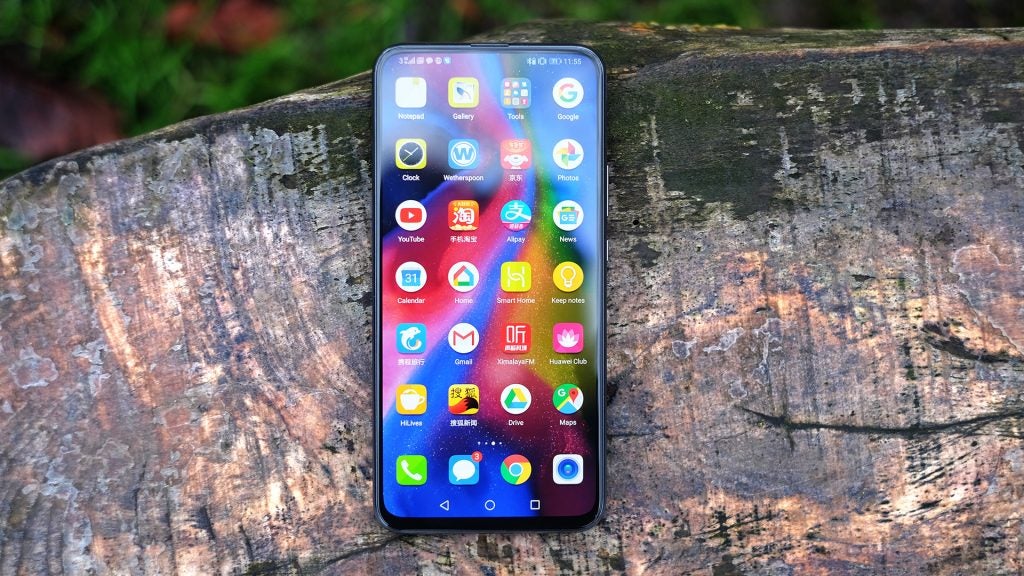
Honor Magic 2 – Software
There’s plenty of great hardware in the Honor Magic 2. However, the software reminds of the bad old days of Huawei and Honor phones, when everyone used to complain about their interfaces.
This is a Chinese version of the Magic 2, and since you currently can’t buy it in the UK, importing from elsewhere is your only option.
Using the phone is initially disconcerting; it’s clearly made for the Chinese audience. It comes with a mound of preinstalled software. It defaults to a lock-screen that cycles through “stock” style images each time you take the phone out of standby. The software is lightly peppered with Chinese characters, and there’s a HiBoard homescreen not normally seen in UK/EU Honor phones.
HiBoard is a typical scrolling feed of news and updates from the preinstalled Honor apps.
Getting the Magic 2 back to a much more UK-friendly look and feel won’t take much effort, though You can delete all the app bloat, bar the Huawei AppGallery. HiBoard can be disabled, as can Magazine unlock – the image-shifting lock-screen. The phone doesn’t have an app drawer as standard, but this can be added.
Related: LG G8
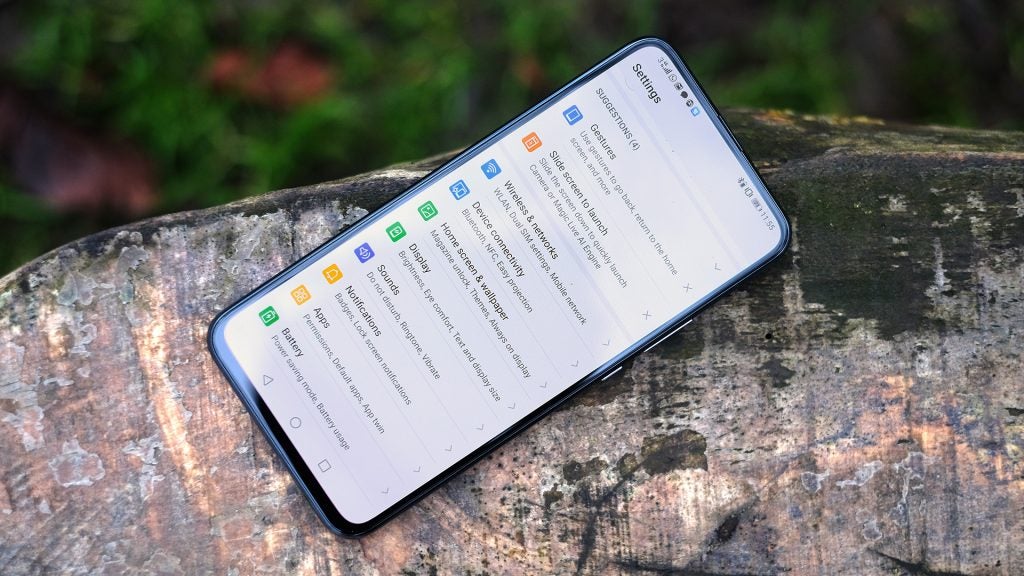
Following five minutes of tweaking, the Honor Magic 2 starts to feel like a more familiar device.
Text-to-speech is the one remaining oddity. I use an app for stretching exercises before I go out on a run; the Honor Magic 2 relayed them through the voice of a young girl with a pretty thick Chinese accent. Predictably enough, the phone has a Chinese speech synthesis engine. However, you can manually install the standard Google one and switch to that following a dig around in Settings.
Imported phones such as this aren’t for the tech-phobic. The Android software at the Magic 2’s roots lets you customise many key elements.
The Magic 2 also incorporates the benefits of Android 9.0. It has app timers and a use-monitoring section called Digital Balance.
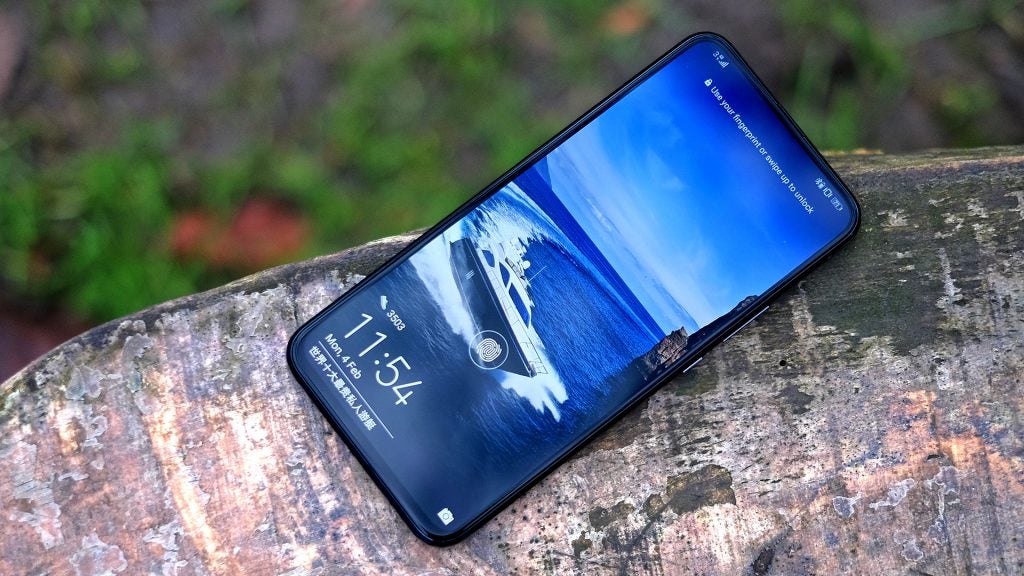
Honor Magic 2 – Performance
In terms of general performance, the Magic 2 is excellent. At the heart of the handset is a HiSilicon Kirin 980 processor, as seen in the Honor View 20 and Huawei Mate 20 Pro.
It’s an octa-core CPU with four Cortex-A76 cores and four Corex-A55 cores, paired with a 10-core Mali-G76 graphics chipset. The performance CPU cores, the Cortex-A76s, are actually the basis for the Kryo cores used in the Snapdragon 855. Qualcomm simply customises them, and “rebrands” them as Kryo 485s.
CPU performance is excellent for the money. The Honor Magic 2 scores 9799 points, beating the OnePlus 6T, if not the 2018/2019 iPhones XS family.
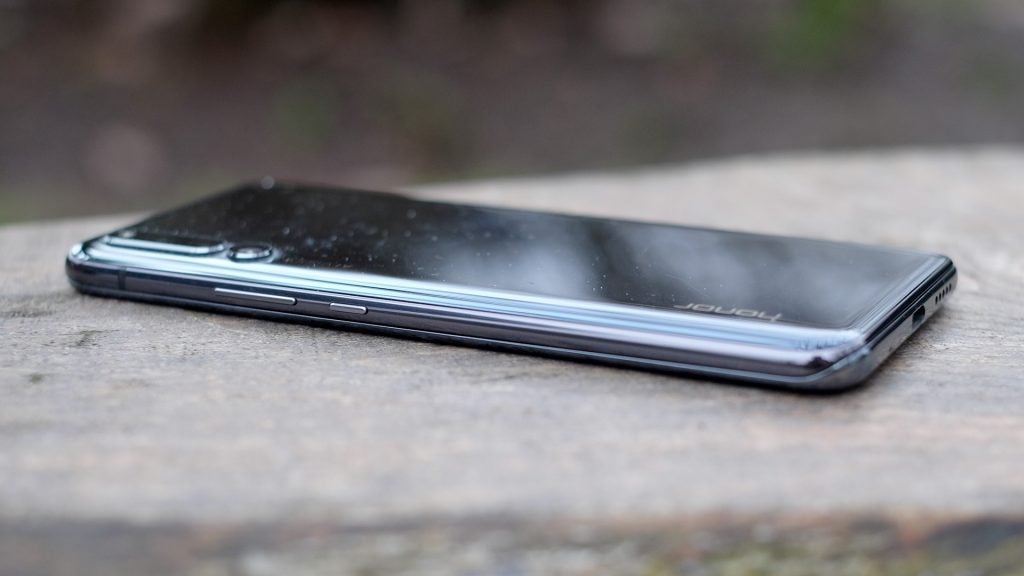
The GPU doesn’t match the Snapdragon 845’s, though, and therefore will likely be thrashed by the Snapdragon 855’s Adreno 640. In 3DMark’s Slingshot Extreme, it scores 3536 points (5009 Vulkan), roughly 20% lower than the Snapdragon 845.
Only a few games highlight this difference, though, when you max-out graphics settings. Ark: Survival Evolved is one example, but the game is still playable with visuals maxed.
Honor Magic 2 – Camera
The rival Honor View 20 offers a view of what higher-end smartphone cameras may look like in 2019. It has an ultra-high resolution, 48-megapixel main camera that uses pixel binning to let it achieve good results in all lighting, and awesome detail in daylight.
Honor’s approach with the Magic 2 is a little more “2018”. There are three cameras on the back. The main sensor is a 16-megapixel chip with an f/1.8 lens. A 24-megapixel monochrome sensor should help out in low light and lets the “2x” zoom mode operate as slightly more than a complete work of fiction.
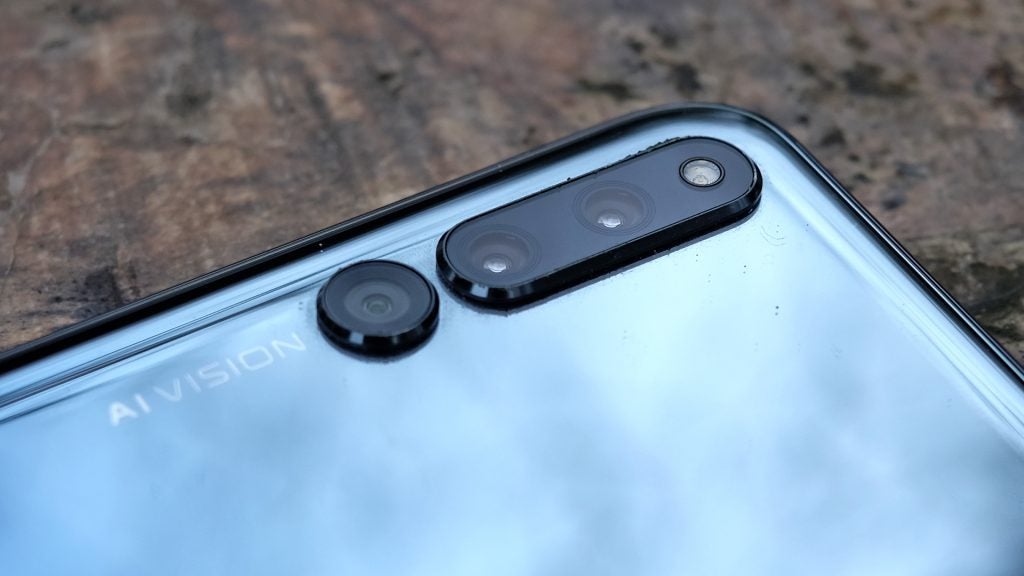
The third camera has a wide-angle lens that sits in front of another 16-megapixel sensor. There’s no “3D” AR camera of the type seen in the View 20. And standard night performance isn’t quite as good as that in-the-family rival, or the OnePlus 6T. It’s a small technological step behind the best-in-class. Some images also suffer from purple fringing, where high-contrast objects have a slight purple outline. It’s an unwanted optical effect of the lens, and becomes more pronounced towards the edges of your images.
There’s a slight drop in clarity towards the edges, too. The Magic 2’s lens aperture is wide enough, but this isn’t a true high-end lens array.
However, the phone still has most of the important benefits of the best Honor cameras. There’s a separate Night mode that combines multiple exposures and uses AI to let you use it handheld. This takes around four seconds and boosts dynamic range and night-time clarity.
The Honor Magic 2 also has the extreme dynamic range boosting when you take daylight images with big contrasts in the light level across the frame.
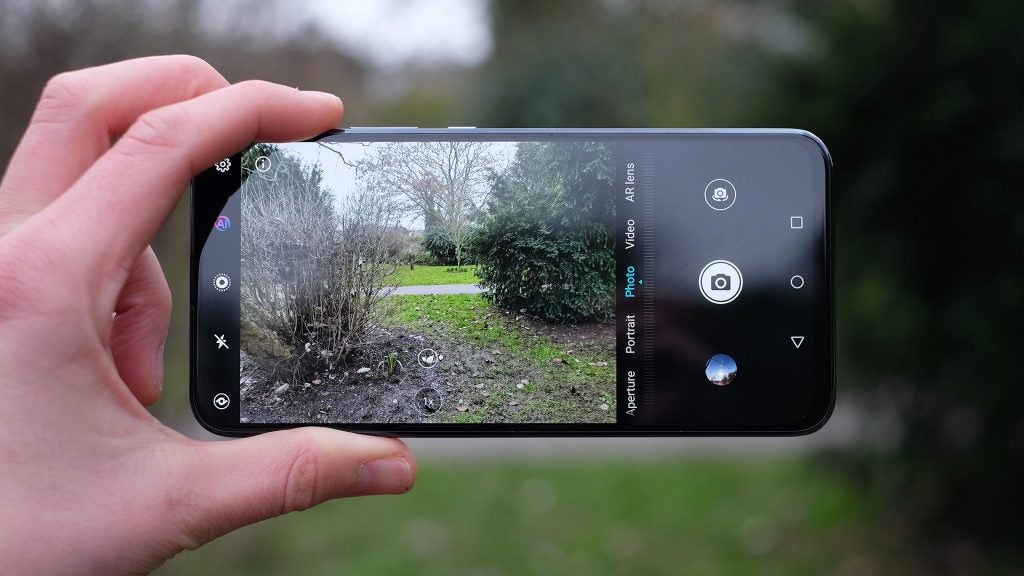
Having a wide angle camera to play with is a huge benefit. Its slightly larger-than-life view encourages you to experiment with different shooting angles and positions, and lets you take photos that simply wouldn’t be possible with a “standard” field of view.
Here are some demo shots taken with the Magic 2:

The Magic 2 isn’t immune to blown highlights, but they’re not pervasive


The ultra-wide view is useful for more dramatic compositions


On occasion colours can looked a little “cooked” in certain modes, but the Magic 2 has brought out rich tones in the shadows here. Also, note the purple fringing on the tiny branches

The phone’s HDR processing is very powerful indeed


Night clarity is fairly good, particularly if you use the “Night” mode
The Honor Magic 2 has many extra modes, and the most useful of them sit on the camera app’s top layer for easy access. AI is the most prominent, and pumps up the brightness and colour saturation of photos, but not usually to the hyperactive level of some older generation Huawei and Honor phones.
Portrait and Aperture modes use the primary lenses to take background blur images, with or without people in them. The results can be striking, as long as you don’t push the Magic 2 so hard it trips over and starts mis-blurring parts of the scene. This can happen when there isn’t a clear difference between the distance of your subject and the background.
The Honor Magic 2 also puts an AR mode front and centre. It plonks 3D anime characters in the scene, and is a reminder you’re using a Chinese phone. It’s a little odd. Dig deeper into the modes section and you’ll find all sorts of extras, including Light Painting, the heavy filtering Artist Mode, Time Lapse, Monochrome and others. Night mode can also be found here, and is one we’d definitely recommend.
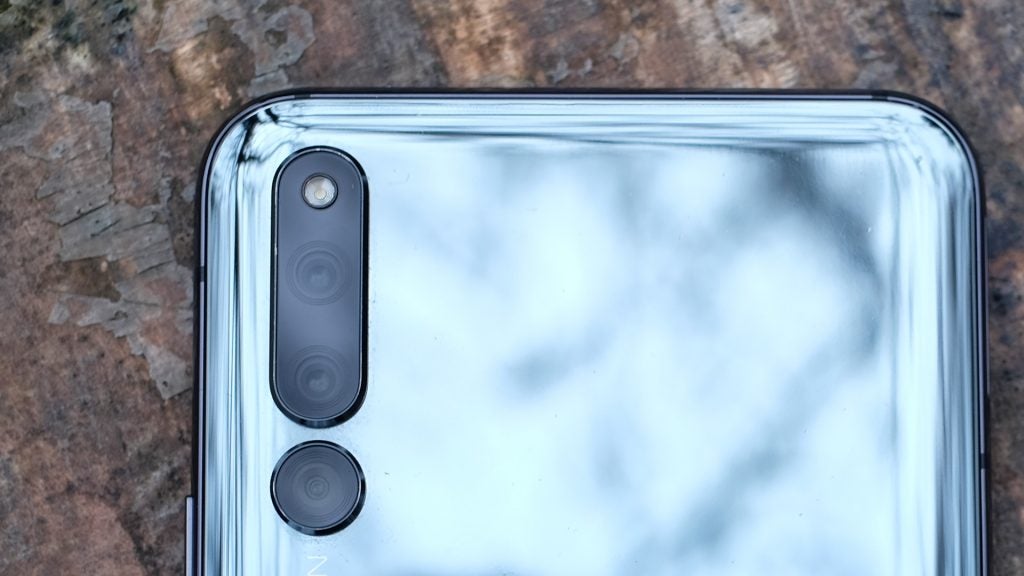
You can shoot video at up to 4K resolution, 30 frames per second. This mode is solid; it uses software stabilisation to smooth out footage. Until fairly recently, you’d often miss out on high-end features such as 4K stabilisation in upper mid-range phones such as this.
The Magic 2 has slo-mo video, too, although it’s easy to miss, as part of the Modes library area. You can’t go all the way up to 960fps as you can with the View 20; 480fps at 720p and 1080p at 120fps are your options.
Honor places as many cameras on the front as it does on the rear of the device. There’s one 16-megapixel main sensor and two 2-megapixel depth cameras set far apart to get a view of either side of your face.
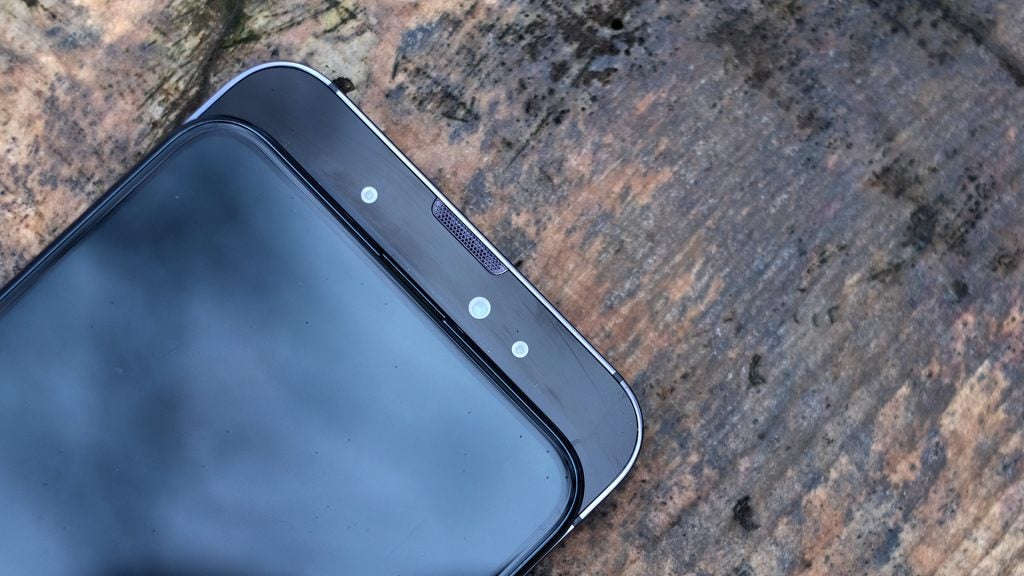
The Honor Magic 2 has two main uses for all these eyes. It can apply lighting and blur effects, to give you an actor’s portfolio-like portrait on a black background, for example. Or you can apply background blur. Honor goes a little further than most here, as you can choose the style of bokeh.
When a camera lens creates a “real” background blur effect, the architecture of the lens determines what the blur will look like, the shape a candle’s flame might distort to. The Magic 2 lets you choose between discs, swirls, hearts and circles to emulate this. It’s much more subtle than it sounds, although the selfie blur is pretty pronounced.
Honor Magic 2 – Battery life
Battery capacity is one of the main technical sacrifices made for the sake of the slider in phones such as the Magic 2. This device is slightly thicker than the View 20, but has a 3500mAh battery, with 500mAh lower capacity.
This means the phone doesn’t quite have the spectacular stamina of the View 20. However, thanks to Honor’s fairly tight controls on power use and background processes, the Magic 2 still lasts through the day comfortably, often with 15-30% remaining for the second day.
Fifty minutes of 3D gaming consumes 12% of the battery, suggesting the device will last for up to seven hours of gaming. That’s excellent. While you likely won’t get two days’ use between charges, the phone is roughly comparable with other solid flagships. I also find that it outlasts the Xiaomi Mi Mix 3.
But, yes, the View 20 lasts significantly longer.
The Magic 2 doesn’t include wireless charging, but it does have extremely potent wired charging. A 40W charger (10W is the base level standard these days) gets the phone from completely flat to completely full in a little over 70 minutes.
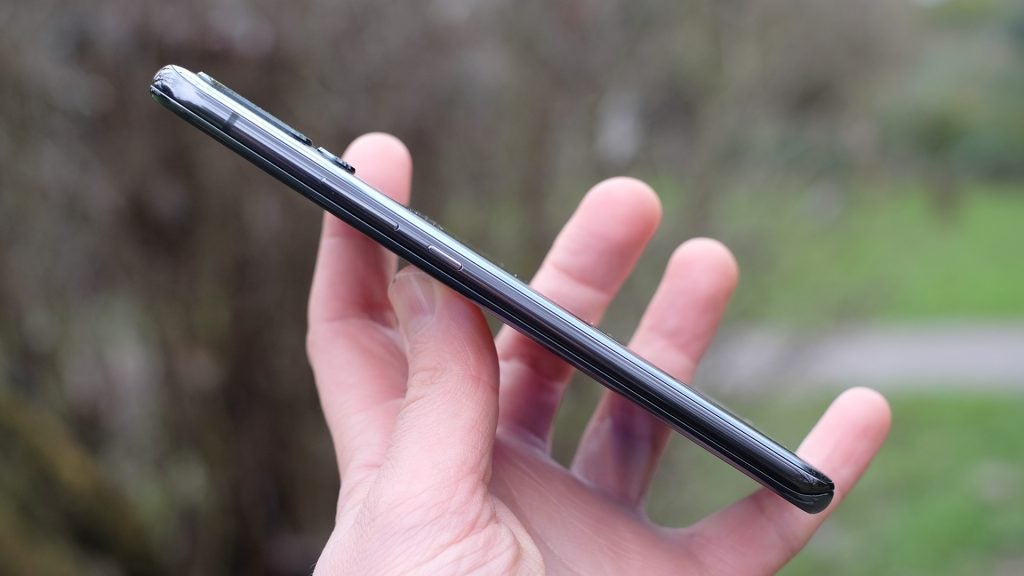
Why buy the Honor Magic 2?
The Honor Magic 2 is part of a small wave of early slider phones – or very late ones, if we include the handsets we owned back in 1999.
In the exact form here, I can’t fully recommend the Honor Magic 2. The Chinese import needs some work to make it UK-friendly, and perhaps the more conventional View 20 is a better phone. This explains the reason that Honor is pushing the latter device, not the Magic 2, in the west.
However, there’s plenty to like here. The screen is wonderful, in its colour modes and contrast, as well as that front-filling shape. In addition, battery life is marginally better than the Xiaomi Mi Mix 3, although that phone does more interesting things with its slider.
Vedict
A clever alternative to a phone with a notch, but not the best option at the price.
How we test phones
We test every mobile phone we review thoroughly. We use industry standard tests to compare features properly and we use the phone as our main device over the review period. We’ll always tell you what we find and we never, ever, accept money to review a product.


